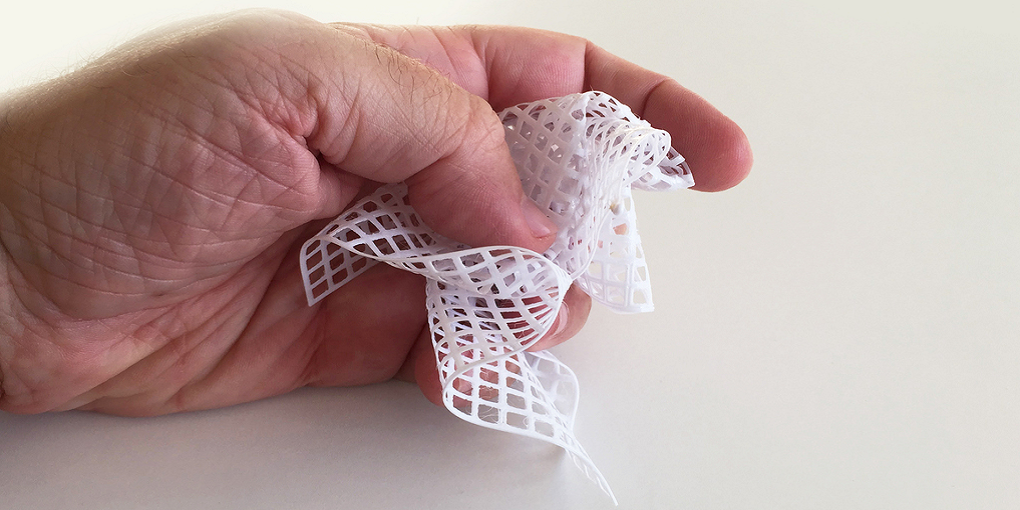Israeli architect David Mussaffi is more than just a 3D print enthusiast, he’s a dedicated 3D print designer with an expert eye for fashion. Last year, he won second place in the Thingiverse #TrexRemix Challenge for his T-Rex High Heel which has the wearer placing her foot in the gaping maw of the carnivore as an intimidating set of teeth bristle threateningly from the surrounding jaw bone.
The idea of printing fabric is not new. In May the Electroloom, a 3D printer that has the ability to 3D print fabric using a process similar to metal electroplating, was introduced to the world through Kickstarter. The Electroloom was an exploration in the creation of a machine that would print in a particular form that would create the process for fabricating flexible, soft fabric with a 3D printer. Mussaffi’s project uses a standard 3D printer and investigates the possibilities for a particular material to become fabric-like.
“I started my journey in the 3D printing world two years ago with a kit of the Printrbot Simple 1405 model (the ‘makers’ edition). My YouTube channel is full of the prints I did on this great machine. I now own a Robox 3D printer, a Zeepro Zim 3D printer and an Ultimaker 2. I have just received another Kickstarter printer, the ‘Ibox-Nano’ but I haven’t had time to try it yet.”
For this experiment in filament, Mussaffi printed at a slow speed of 15-20 mm/sec with the retraction disabled. As TPU is a filament that has a tendency to melt quickly, the prints were produced with some oozing and stringing. He has plans to try the prints again at a higher speed to see if it is possible to avoid some of those features; however, he acknowledges that he thinks these ‘defects’ actually add to the textile-like look of the prints.
In that case, I think I will have my children’s clothing printed out of it – comfort be damned.
Let’s hear your thoughts on 3D fabric printing in the 3D Printing with Polyurethane forum thread on 3DPB.com.
